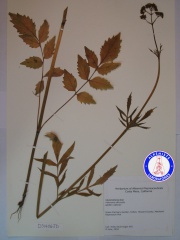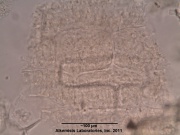Valeriana officinalis (root)
| Line 6: | Line 6: | ||
Native to Europe and parts of Asia, valerian has been introduced into North America. It is consumed as food by the larvae of some Lepidoptera (butterfly and moth) species including Grey Pug. | Native to Europe and parts of Asia, valerian has been introduced into North America. It is consumed as food by the larvae of some Lepidoptera (butterfly and moth) species including Grey Pug. | ||
| − | |||
| − | |||
''The quoted text in this section was licensed for use under the Creative Commons ShareAlike License, version 3.0: http://creativecommons.org/licenses/by-sa/3.0/'' | ''The quoted text in this section was licensed for use under the Creative Commons ShareAlike License, version 3.0: http://creativecommons.org/licenses/by-sa/3.0/'' | ||
| − | |||
=Macroscopic Entries= | =Macroscopic Entries= | ||
Revision as of 20:36, 11 September 2012
Contents |
Introduction
Introduction from Wikipedia, the free encyclopedia (http://en.wikipedia.org/wiki/Valeriana_officinalis, retrieved 09/11/2012).
Valerian (Valeriana officinalis, Valerianaceae) is a hardy perennial flowering plant, with heads of sweetly scented pink or white flowers which bloom in the summer months. Valerian flower extracts were used as a perfume in the sixteenth century.
Native to Europe and parts of Asia, valerian has been introduced into North America. It is consumed as food by the larvae of some Lepidoptera (butterfly and moth) species including Grey Pug.
The quoted text in this section was licensed for use under the Creative Commons ShareAlike License, version 3.0: http://creativecommons.org/licenses/by-sa/3.0/
Macroscopic Entries
|
Microscopic Entries
|
HPTLC Entries
HPTLC Entries
Other Points of Interest
Cite error: <ref> tags exist, but no <references/> tag was found



